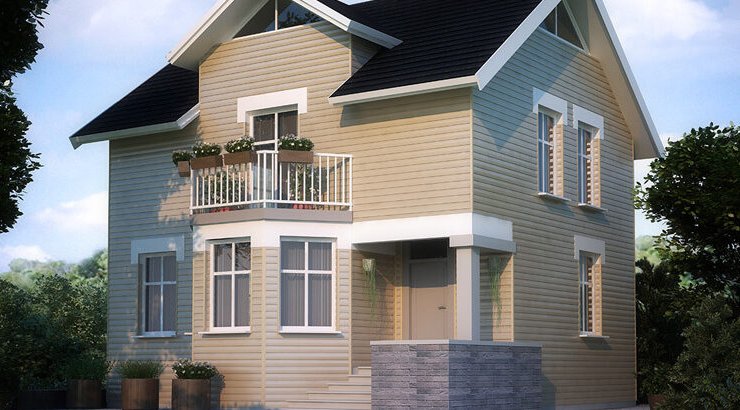Siding is a popular material for facade cladding. Helps to protect the walls of the house from ultraviolet radiation, high humidity, temperature extremes. For residential construction, different materials are used: brick, concrete, stone, wood. They all have pros and cons. For example, concrete is the standard of durability and wear resistance, but it looks unattractive and is afraid of the effects of aggressive chemical elements. The tree is aesthetically pleasing, but it shrinks strongly and is susceptible to high humidity, is prone to decay. Cladding with siding, which is made from various materials, helps to reduce negative aspects.
Metal systems
Most often it is made of galvanized steel with a polymer coating. Let us examine the advantages and disadvantages of metal siding as a facing material. The width of the lamellas, as a rule, is from 12 to 30 cm, the permissible length is 5-6 meters. Due to galvanizing, the metal acquires resistance to corrosion, and the polymer layer protects against UV rays, temperature changes, and also gives decorative effect. The main advantages of this material:
- Mechanical strength and wear resistance.
- Service life - up to 50 years.
- Not subject to decay, corrosion, negative effects of low temperatures.
- Requires little or no maintenance, but if deep scratches appear on the surface, they should be repaired.
Of the minuses, we note the difficult installation due to the significant weight of the structures, as well as the effect of a drum in the rain. Before cladding with such siding, you need to equip a ventilated facade.
Basement siding
This material is most often used to decorate plinths. It is durable, dense, therefore it protects well against sediment and melt water, accidental splashes. Due to the imitation of natural materials, it looks very aesthetically pleasing. No one bothers to use such siding for wall cladding completely, however, due to the increased costs, this is rarely done. Less expensive vinyl is often preferred.
What should be considered advantages and disadvantages basement siding as cladding? High-quality material from a reliable manufacturer will last 20-50 years, even with minimal maintenance. The siding is moisture resistant, well protects the basement from moisture, which destroys the facade and erodes the foundation. At the same time, it allows you to obtain a ventilated facade. Basement siding is thicker and more durable than usual, better copes with high loads. And since it is lightweight, you can even install it alone.
However, remember the disadvantages, first of all, the ability of panels to expand and contract depending on environmental conditions. This must be taken into account during installation: leave small gaps so that the lamellas do not burst when expanding. Basement siding is not completely fireproof. The material does not burn, but begins to melt when exposed to high temperatures. At subzero temperatures, however, it becomes more fragile.
Despite the disadvantages, any type of siding leaves far behind the main competitors. It is stronger and more durable than plaster, resistant to decay and insects, unlike lining, more affordable than ceramic bricks.





